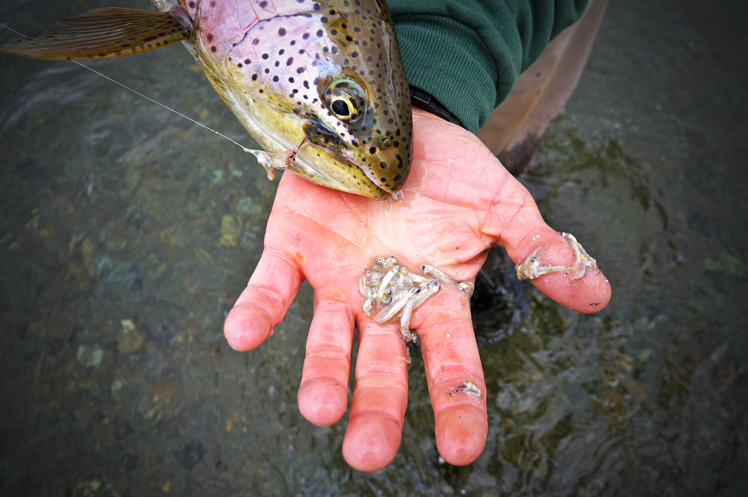
By Cory Luoma with Fly Out Travel
Alaska's Other Peak Season
Most people who come up to Alaska to fish for big rainbows and char think the ONLY time of the year is when the sockeye salmon are in the rivers dropping eggs throughout August and September. While the egg drop does make for some silly good trout fishing, fishing the early season fry/smolt migration in June is some of the most exciting fishing we see all summer. And for anglers who like to swing flies, it is hard to beat.
Every river that has a salmon run, will also have a baitfish migration at one time or another. Specifically, river systems with heavy sockeye salmon returns provide some of the greatest near surface streamer fishing found anywhere in the world. As the snow melts, and spring starts to become summer, the fragile aelvin stage salmon begin to take shape. Now considered "fry," they move from their natal hatching grounds towards the lakes where they will grow before migrating to sea.
Not only do the fry stage salmon move during the Alaska spring, but various species of salmon "smolt" also migrate towards their salty feeding grounds, where they will spend a few years growing before returning back to their home water to spawn. Depending on the species, the "smolt" will vary in size and coloration, but in general they are larger than their "fry" cohorts.
As the young Sockeye fry begin to move around, rainbow trout, lake trout and char concentrate in specific parts of the rivers and lakes in preparation to intercept the chokingly thick, pulsing mass of protein. Getting your fly hammered by trout that are acting more like a school of saltwater tuna is some of the most exciting trout fishing there is. Soft hands need not apply as there are no soft strikes here. At times it can be slow, and patience is a must. But if you are positioned correctly, and the fish gods smile down upon you the way they sometimes do, you are in for the ride of your life.

4 Tips for Fishing the Smolt Migration for Trout
- Look for birds circling and working the water. In most cases dozens of Arctic Terns, gulls, and other birds will be actively fishing alongside of you when the action is hot. Other times, a single and unsuspecting tern will indicate a spot with dozens of trout feeding on salmon smolt. Fish there.
- Low light periods prompt the salmon smolt to move downriver and if you pay attention to "choke" points in the river, lake inlets/outlets for example, there is a pretty good chance you will see boiling fish slashing at the bait balls. Fishing during these windows is AWESOME. You'd swear the fish are taking dry flies off the surface.
- If you’re seeing actively feeding trout boiling and hitting surface, use floating line and maybe even grab a light sparsely tied fly that does not sink too quickly. Keep it about an inch or two below the surface in the general area where you see the boils and hold on. In my experience, your fly needs to be close to the surface to fool a fish that's locked into fry.
- Be sure to have a variety of smolt and fry patterns in different sizes, weights, and colors so you can switch things up as conditions change throughout the day. Check out Alaska Fly Fishing Goods list of their Recommend Flies for fishing the spring smolt and fry migrations.
Alaska's Top Early Season Destinations
Looking to cash in on this unique time period? Below is a list of some of Alaska's great lodges that are perfectly positioned to take advantage of this spectacular phenomenon. If you would like more details about planning a trip to Alaska fly fishing destinations contact Fly Out Travel.

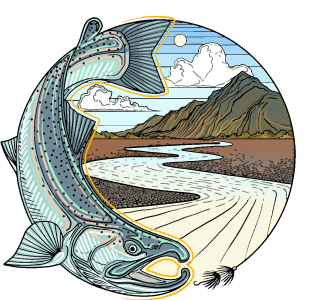
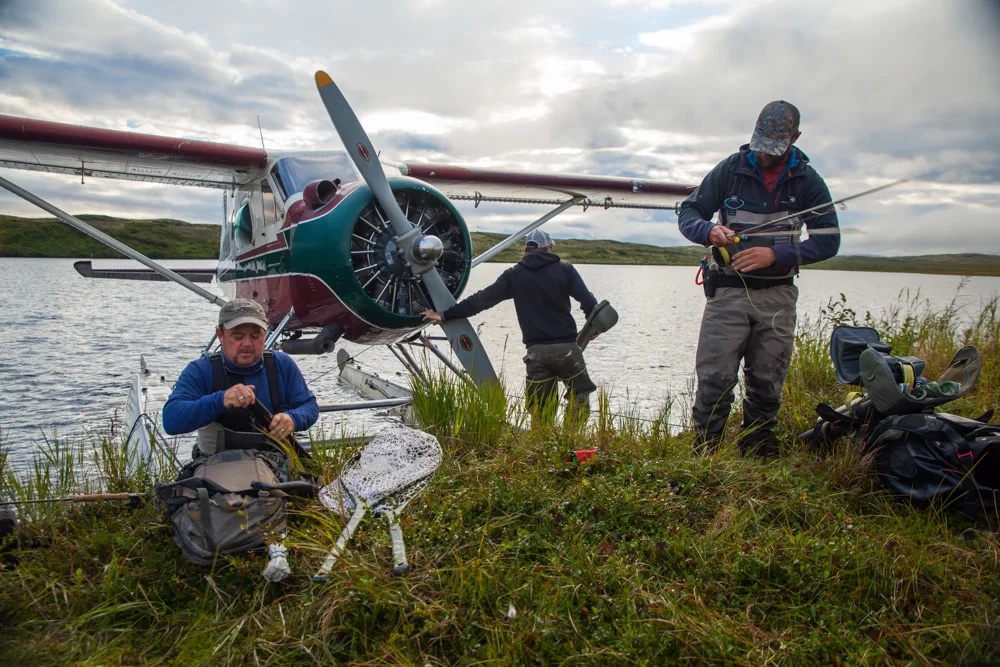

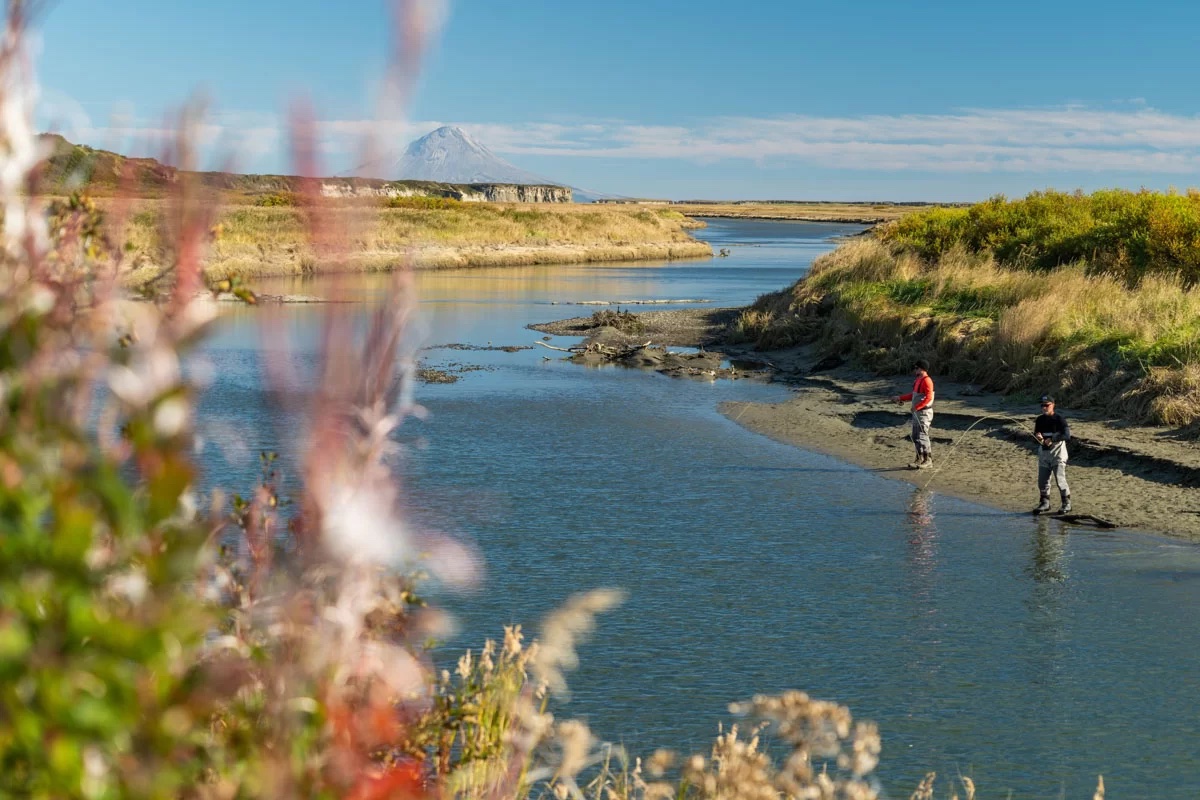
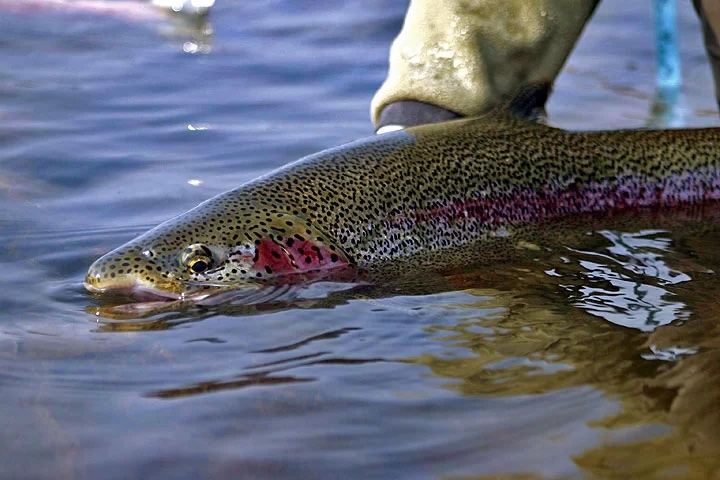

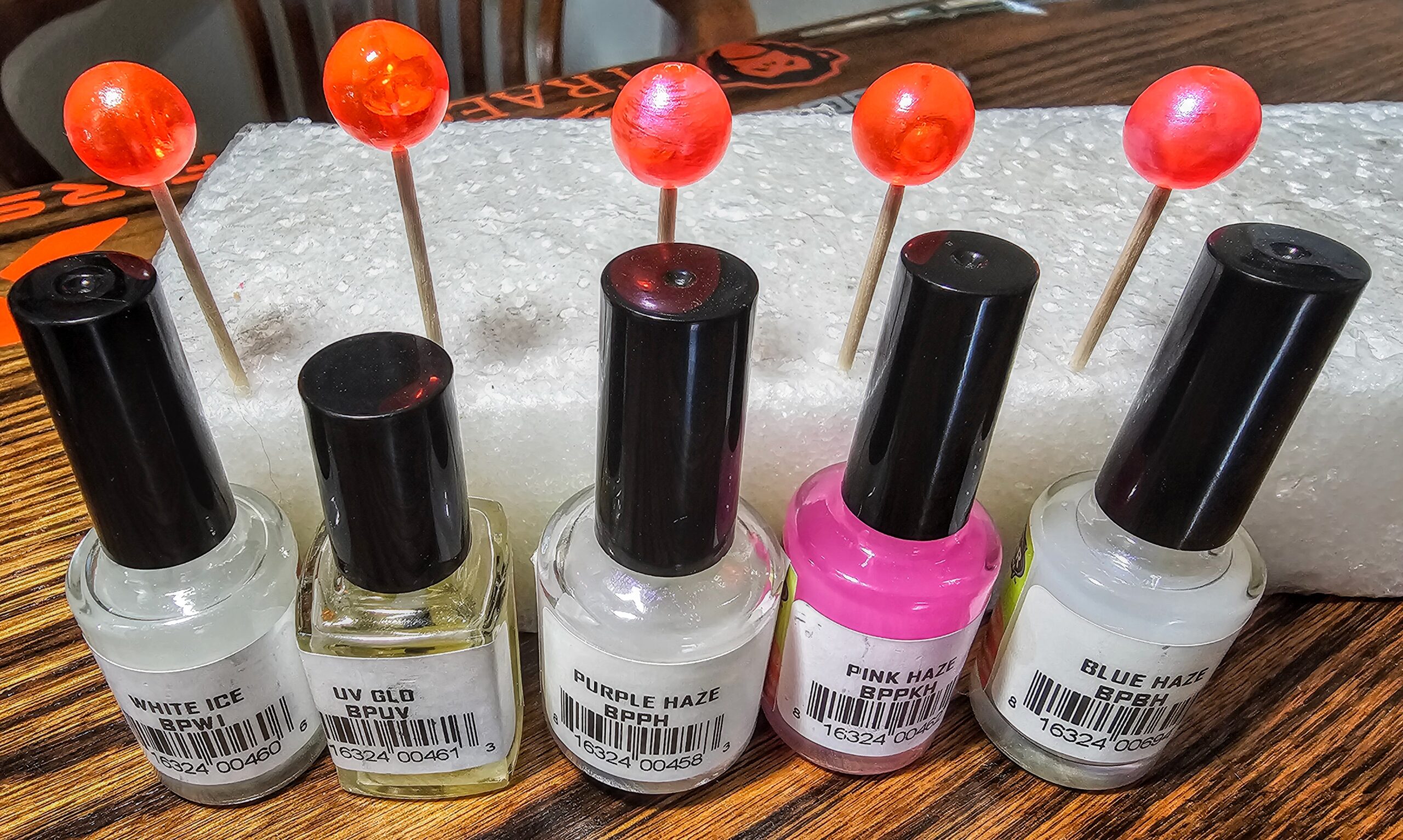
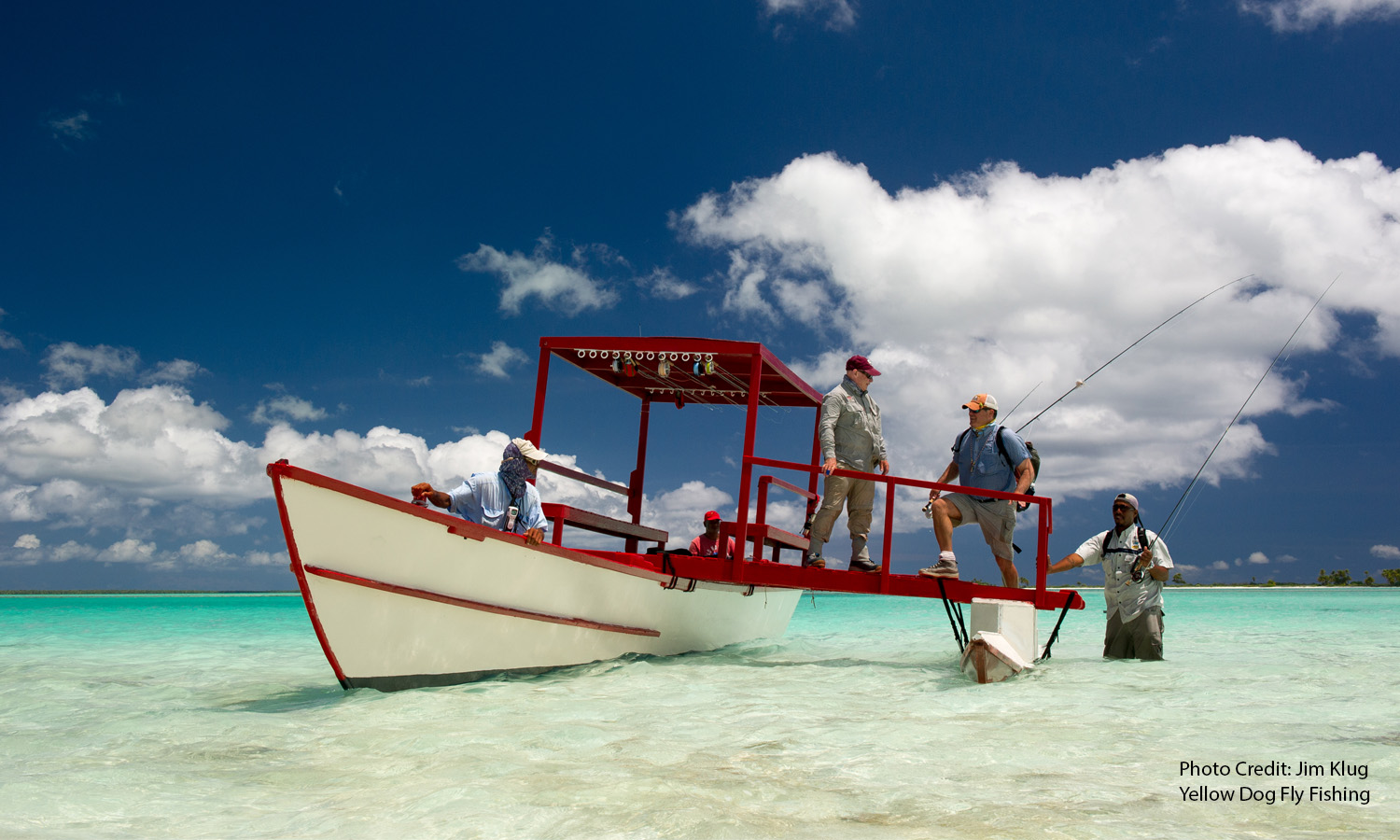
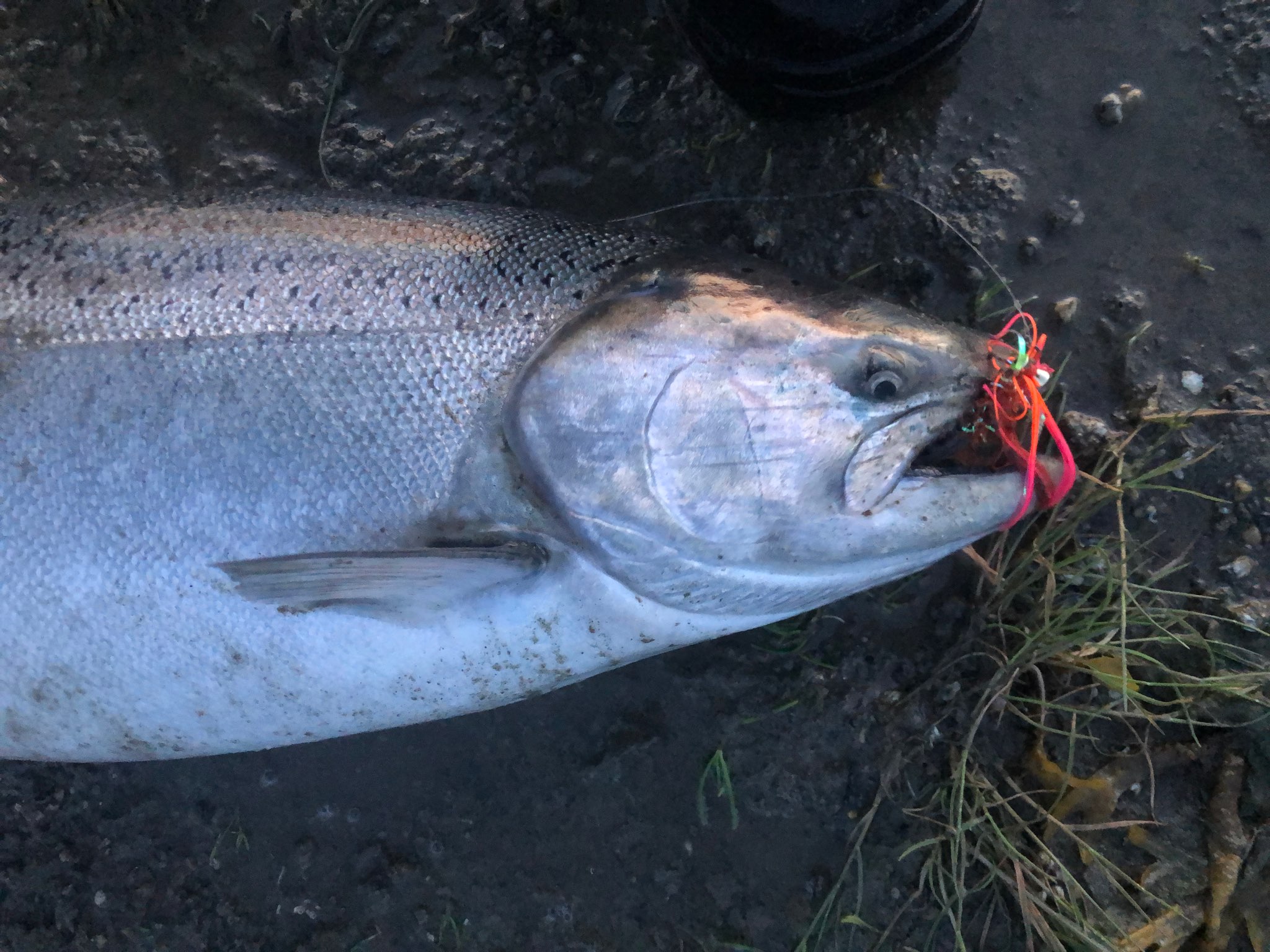
Leave A Comment